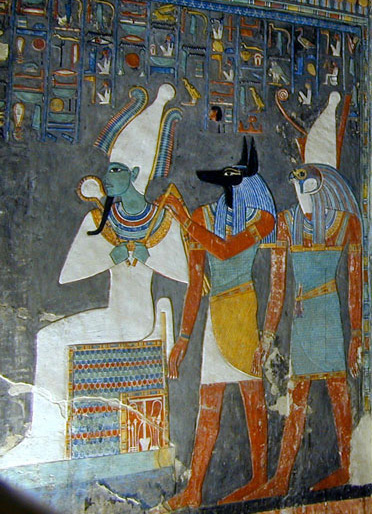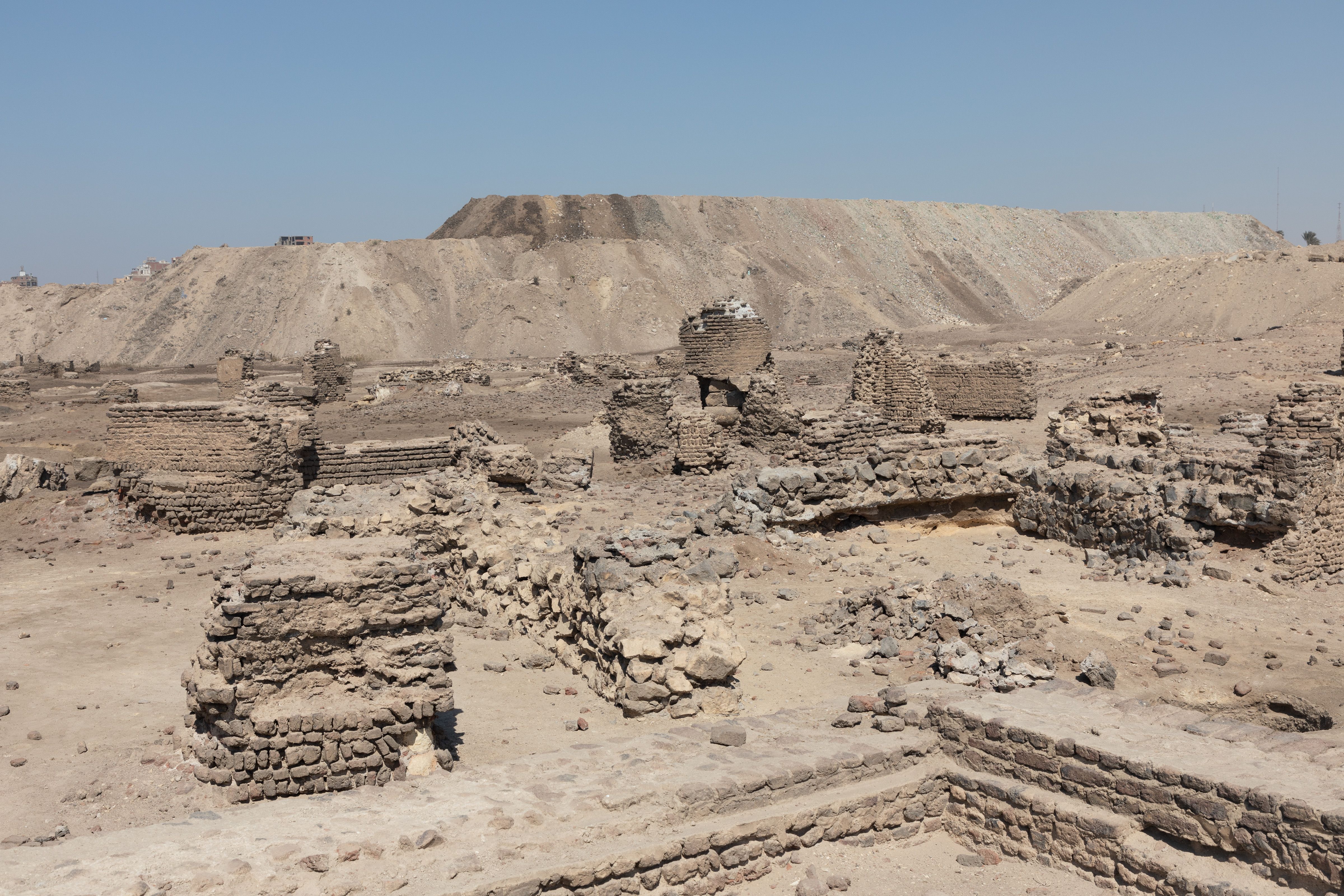|
Assessors Of Maat
The Assessors of Maat were 42 minor ancient Egyptian deities of the Maat charged with judging the souls of the dead in the afterlife by joining the judgment of Osiris in the Weighing of the Heart.Hart 1986, pp. 34–5.Wilkinson 2003, pp. 84–5. Description Negative Confessions and psychostasia Chapter 125 of the Book of the Dead lists names and provenances (either geographical or atmospheric) of the Assessors of Maat. A declaration of innocence corresponds to each deity: it is pronounced by the dead himself, to avoid being damned for specific "sins" that each of the 42 Judges is in charge of punishing. The deceased was accompanied in the presence of Osiris by the psychopomp god Anubis – where he would have declared that he was guilty of none of the "42 sins" against justice and truth by reciting a text known as "Negative confessions". The heart ( ib / jb) of the deceased was then weighed on a two-plate scale: a plate for the heart, the other for the feather of M ... [...More Info...] [...Related Items...] OR: [Wikipedia] [Google] [Baidu] |
Ancient Egyptian Deities
Ancient Egyptian deities are the gods and goddesses worshipped in ancient Egypt. The beliefs and rituals surrounding these gods formed the core of ancient Egyptian religion, which emerged sometime in prehistory. Deities represented natural forces and phenomena, and the Egyptians supported and appeased them through offerings and rituals so that these forces would continue to function according to '' maat'', or divine order. After the founding of the Egyptian state around 3100 BC, the authority to perform these tasks was controlled by the pharaoh, who claimed to be the gods' representative and managed the temples where the rituals were carried out. The gods' complex characteristics were expressed in myths and in intricate relationships between deities: family ties, loose groups and hierarchies, and combinations of separate gods into one. Deities' diverse appearances in art of ancient Egypt, art—as animals, humans, objects, and combinations of different forms—also all ... [...More Info...] [...Related Items...] OR: [Wikipedia] [Google] [Baidu] |
Ammit
Ammit (; , "Devourer of the Dead"; also rendered Ammut or Ahemait) was an ancient Egyptian goddess with the forequarters of a lion, the hindquarters of a hippopotamus, and the head of a crocodile—the three largest "man-eating" animals known to ancient Egyptians. In ancient Egyptian religion, Ammit played an important role during the funerary ritual, the Judgment of the Dead. Nomenclature Ammit (; ) means "''devourer of the dead''" ("''devoureress of the dead''") or "''swallower of the dead''", where is the verb "to swallow", and signifies "the dead", more specifically the dead who had been adjudged not to belong to the ("blessed dead") who abided by the code of truth ( Ma'at). Iconography Ammit is denoted as a female entity, commonly depicted with the head of a crocodile, the forelegs and upper body of a lion (or leopard), and the hind legs and lower body of a hippopotamus. The combination of three deadly animals of the Nile: crocodile, lion, and hippopotamus, sugg ... [...More Info...] [...Related Items...] OR: [Wikipedia] [Google] [Baidu] |
Old Cairo
Old Cairo (, Egyptian pronunciation: Maṣr El-ʾAdīma) is a historic area in Cairo, Egypt, which includes the site of a Babylon Fortress, Roman-era fortress, the Christian settlement of Coptic Cairo, and the Muslim-era settlement of Fustat that pre-dates the founding of Cairo proper in 969 AD. It is part of what is referred to as Historic Cairo, a UNESCO World Heritage Site. ''Miṣr al-Qadīma'' is also a modern administrative district in the Southern Area of Cairo, encompassing the area from the Cairo Citadel Aqueduct, Cairo Aqueduct to the north, to the Ring Road (Cairo), Ring Road in the south, and from the City of the Dead (Cairo), Khalifa cemetery to the east, to the Nile Corniche in the west, as well as Roda Island, or Manial al-Roda. It had 250,313 residents according to the 2017 census. History Roman fort and Coptic Cairo The area around present-day Cairo had long been a focal point of Ancient Egypt due to its strategic location at the junction of the Nile Valley and ... [...More Info...] [...Related Items...] OR: [Wikipedia] [Google] [Baidu] |
Xois
Sakha, also known by the ancient name of Xois (, , Strabo xvii. p, 802; Ptolemy iv. 5. § 50; , Stephanus of Byzantium ''s. v.'') is a town in Kafr El Sheikh Governorate of Egypt. Located near the center of the Nile Delta, it is a city of great antiquity, identified with the ancient Egyptian city of Ḫꜣsww(t) (Khasut or Khaset). History Xois sat upon an island formed by the Sebennytic and Phatnitic branches of the Nile. It belonged to the Sebennytic Nome, and later was the capital of its own nome, the Xoite nome. The Fourteenth Dynasty of Egypt consisted, according to Manetho, of 76 Xoite kings. This dynasty immediately preceded that of the Hyksos during the Second Intermediate Period. It seems possible, therefore, that Xois, from its strong position among the marshes of the Nile Delta formed by the intersecting branches of the river, could have held out during the occupation of the Delta by the Hyksos, or at least compromised with the invaders by paying them tribute ... [...More Info...] [...Related Items...] OR: [Wikipedia] [Google] [Baidu] |
Heliopolis (ancient Egypt)
Heliopolis (Jwnw, Iunu; , 'the Pillars'; , ; ) was a major city of ancient Egypt. It was the capital of the 13th or Heliopolite Nome of Lower Egypt and a major religious centre. Its site is within the boundaries of Ain Shams and El Matareya, districts (''kism'') in northeastern Cairo. Heliopolis was one of the oldest cities of ancient Egypt, occupied since prehistoric Egypt.. It greatly expanded under the Old and Middle Kingdoms but is today mostly destroyed, its temples and other buildings having been scavenged for the construction of medieval Cairo. Most information about the ancient city comes from surviving records. A major surviving remnant of Heliopolis is the obelisk of the Temple of Ra- Atum erected by Senusret I of the Twelfth Dynasty. It remains in its original position (now in el-Masalla, El Matareya, Cairo). The high red granite obelisk weighs 120 tons (240,000 lbs) and is believed to be the oldest surviving obelisk in the world. Other obelisks, o ... [...More Info...] [...Related Items...] OR: [Wikipedia] [Google] [Baidu] |
Richard H
Richard is a male given name. It originates, via Old French, from Old Frankish and is a compound of the words descending from Proto-Germanic language">Proto-Germanic ''*rīk-'' 'ruler, leader, king' and ''*hardu-'' 'strong, brave, hardy', and it therefore means 'strong in rule'. Nicknames include " Richie", " Dick", " Dickon", " Dickie", " Rich", " Rick", "Rico (name), Rico", " Ricky", and more. Richard is a common English (the name was introduced into England by the Normans), German and French male name. It's also used in many more languages, particularly Germanic, such as Norwegian, Danish, Swedish, Icelandic, and Dutch, as well as other languages including Irish, Scottish, Welsh and Finnish. Richard is cognate with variants of the name in other European languages, such as the Swedish "Rickard", the Portuguese and Spanish "Ricardo" and the Italian "Riccardo" (see comprehensive variant list below). People named Richard Multiple people with the same name * Richard Ander ... [...More Info...] [...Related Items...] OR: [Wikipedia] [Google] [Baidu] |
Egyptology
Egyptology (from ''Egypt'' and Ancient Greek, Greek , ''wiktionary:-logia, -logia''; ) is the scientific study of ancient Egypt. The topics studied include ancient Egyptian History of Egypt, history, Egyptian language, language, Ancient Egyptian literature, literature, Ancient Egyptian religion, religion, Ancient Egyptian architecture, architecture and Art of ancient Egypt, art from the 5th millennium BC until the end of its native religious practices in the 4th century AD. History First explorers The earliest explorers of ancient Egypt were the ancient Egyptians themselves. Inspired by a dream he had, Thutmose IV led an excavation of the Great Sphinx of Giza and inscribed a description of the dream on the Dream Stele. Less than two centuries later, Prince Khaemweset, fourth son of Ramesses II, would gain fame for identifying and restoring historic buildings, tombs and temples, including pyramids; and has subsequently been described as the first Egyptologist. Classical Antiqu ... [...More Info...] [...Related Items...] OR: [Wikipedia] [Google] [Baidu] |
Revelation
Revelation, or divine revelation, is the disclosing of some form of Religious views on truth, truth or Knowledge#Religion, knowledge through communication with a deity (god) or other supernatural entity or entities in the view of religion and theology. Types Individual revelation Thomas Aquinas believed in two types of individual revelation from God in Christianity, God, ''general revelation'' and ''special revelation''. In general revelation, God reveals himself through his creation, such that at least some truths about God can be learned by the empiricism, empirical study of Physis, nature, physics, cosmology, etc., to an individual. Special revelation is the knowledge of God and spiritual matters which can be discovered through supernatural means, such as scripture or miracles, by individuals. Direct revelation refers to communication from God to someone in particular. Though one may deduce the existence of God and some of God's attributes through general revelation, certain ... [...More Info...] [...Related Items...] OR: [Wikipedia] [Google] [Baidu] |




